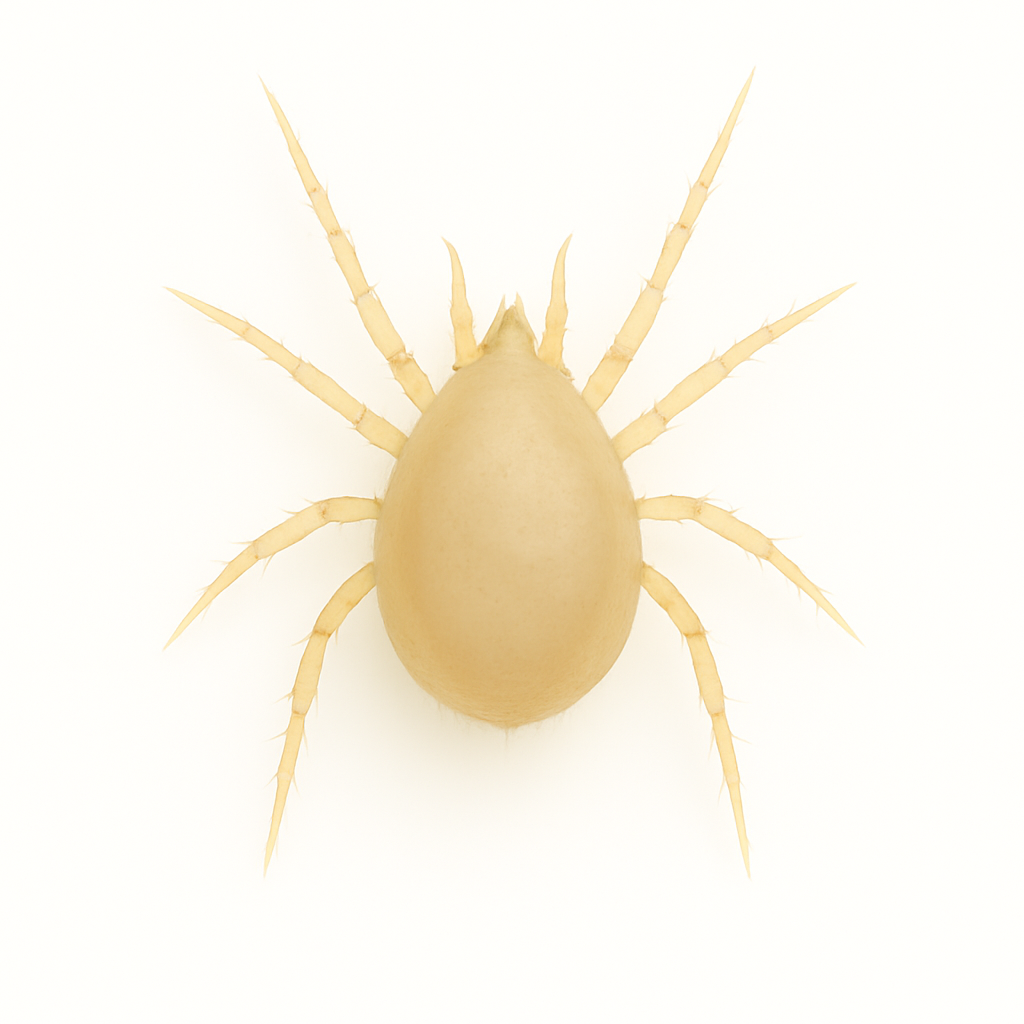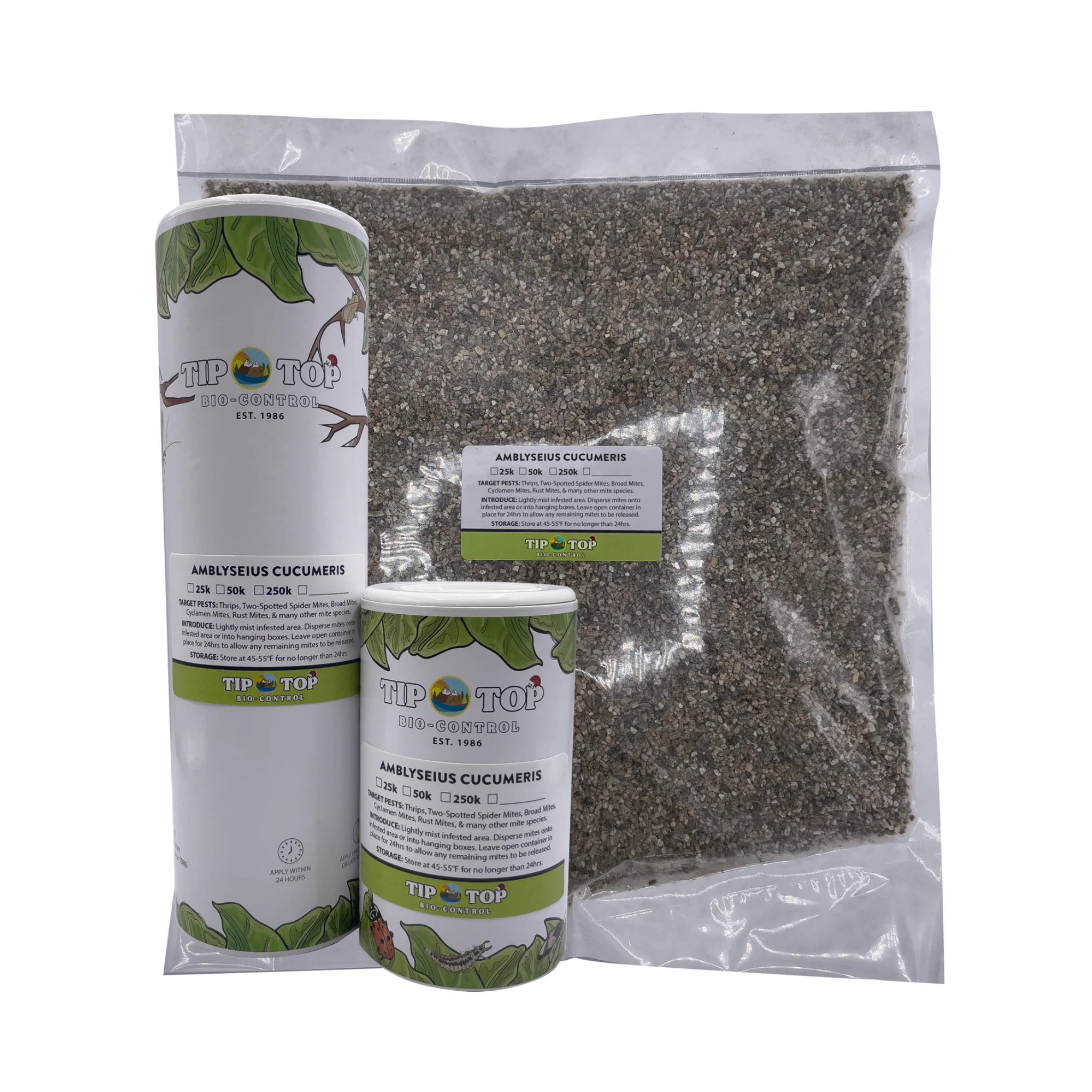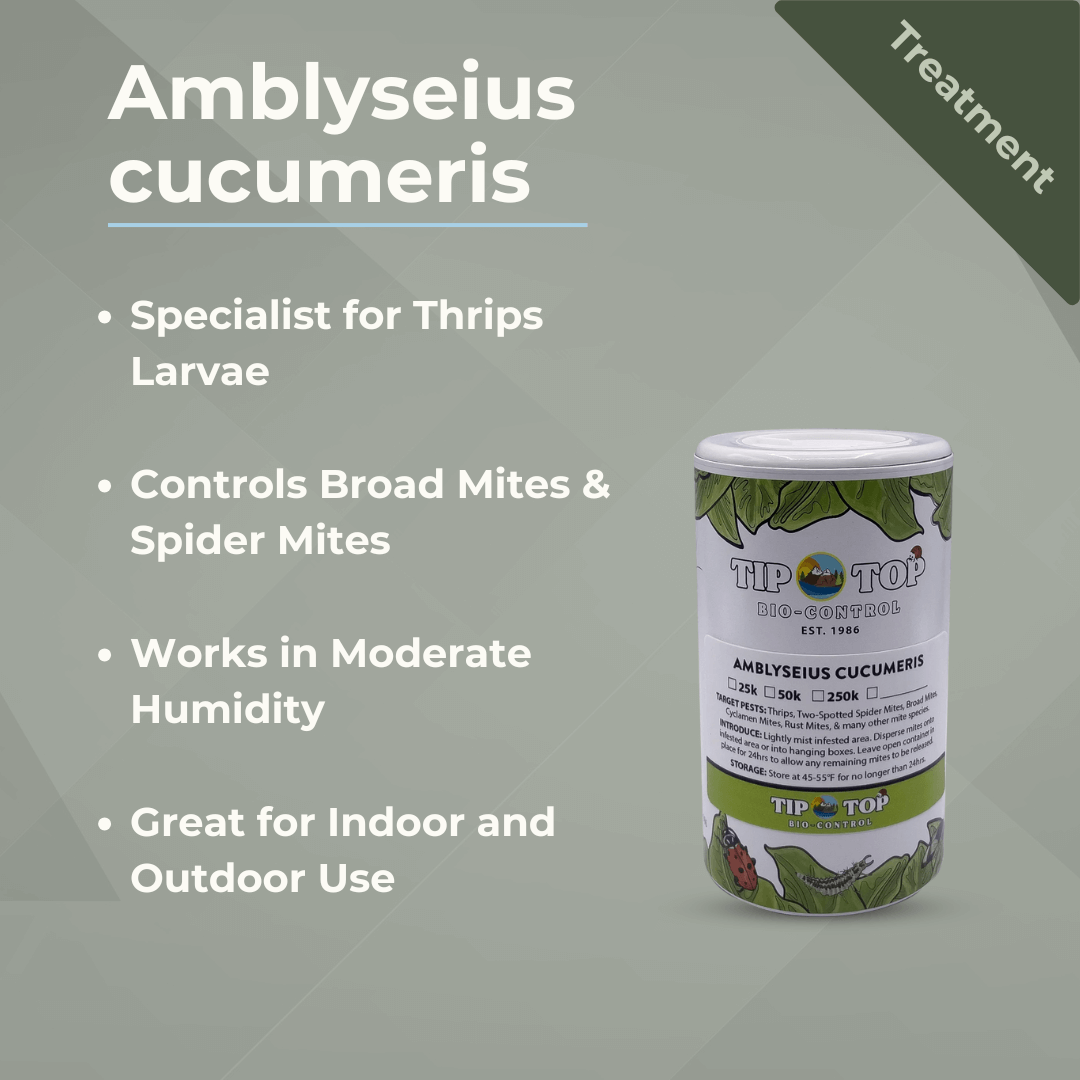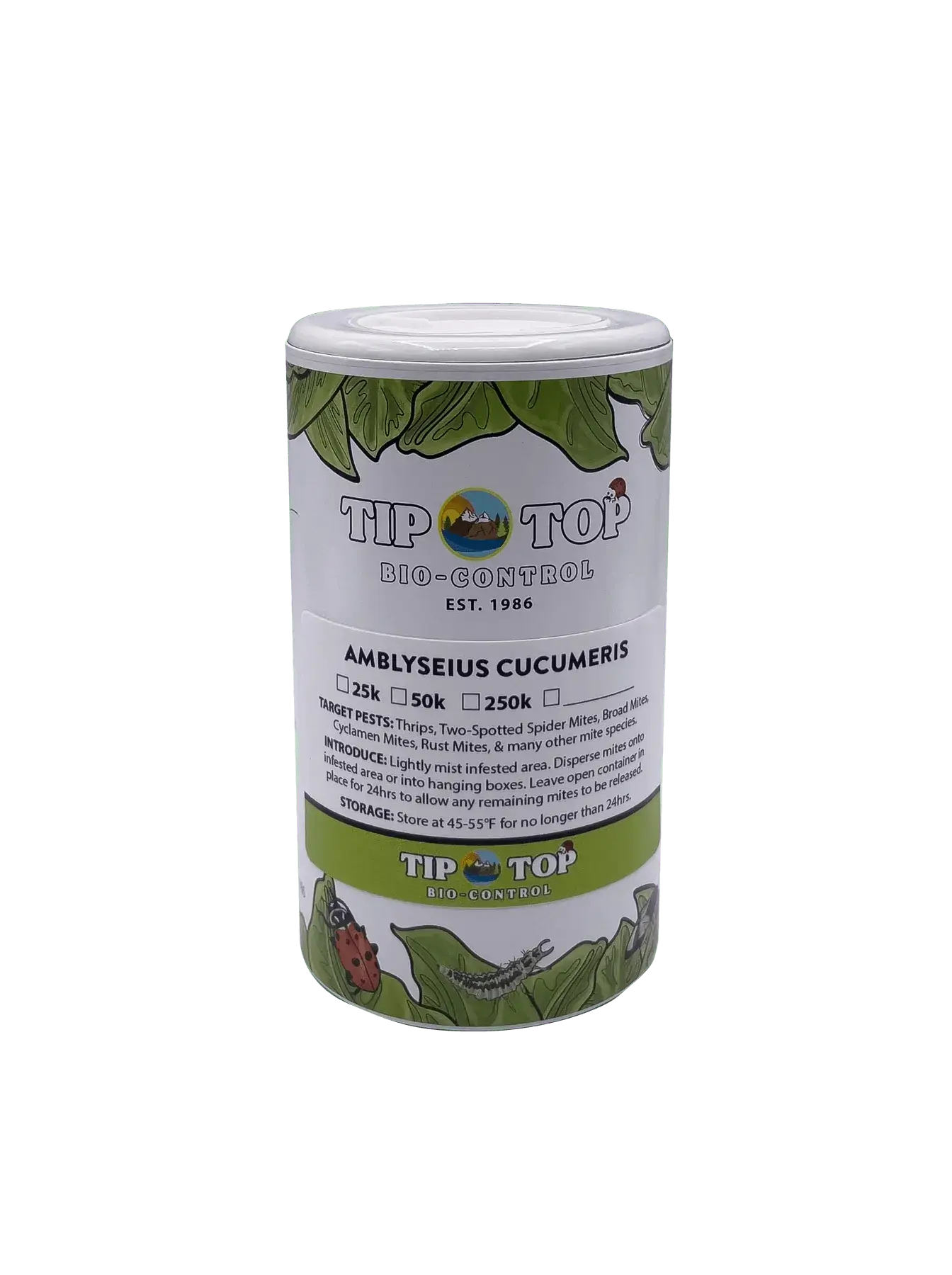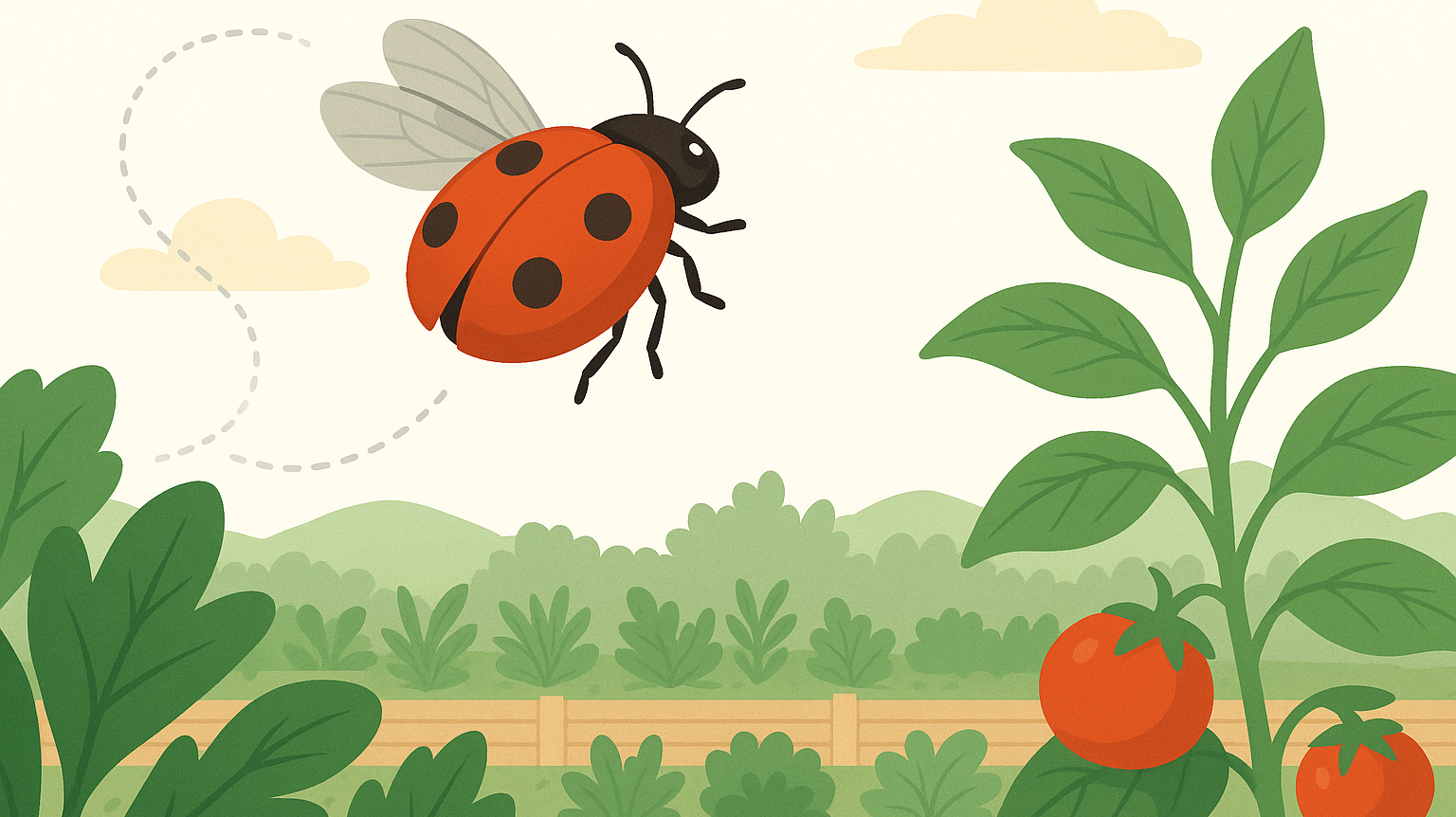Still Fighting Thrips? You’re Not Treating the Right Stage.
Sprays can’t reach them. Wiping leaves won’t stop them. And once adult thrips are flying, you’ve already missed your window.
Amblyseius cucumeris targets the stage where the real damage happens—thrips larvae. These microscopic predators hunt larvae where they hide: under leaves, deep in canopy gaps, and around new growth.
Each bottle contains only live adult mites, ready to hunt as soon as they’re released. No lag. No hatch cycle. Just fast, biological knockdown—especially effective in cooler grow environments where other species underperform.
Amblyseius cucumeris Bottles
Targeted Treatment for Thrips Larvae and Broad Mites
This is not a slow-release system. It’s a precision strike for active infestations of:
-
Thrips larvae
-
Broad mites
-
Cyclamen mites
-
Rust mites
-
Spider mite eggs and early-stage nymphs
-
Russet mites (limited control)
For adult thrips, pair with Orius insidiosus to close the lifecycle.
Why Bottled Cucumeris?
| Feature | Why It Matters |
|---|---|
| Immediate Action | Adults feed on contact—no egg hatch delay |
| Targeted Application | Sprinkle directly where larvae are active |
| Fast Results | Suppression often visible in 2–5 days |
| No Surprises | No development lag—what you release is what hunts |
| Cooler Climate Performance | Thrives in 54–80°F with moderate humidity |
If you’re seeing signs and need thrips gone fast, this is the version that doesn’t wait around.
How It Works
| Timeline | Activity |
|---|---|
| Day 0 | Adults begin hunting immediately |
| Days 2–3 | Larval populations drop |
| Days 4–5 | Less silvering, less scarring |
| Week 1+ | Reproduction may start (under ideal conditions) |
Use weekly in high-pressure zones, or as a first strike before switching to slow-release sachets for maintenance.
How Much to Use
| Area | Pest Pressure | Suggested Rate |
|---|---|---|
| Small tent (2×4) | Light | 1,000–2,000 mites (5–10/sq ft) |
| Grow room (10×10) | Moderate | 10,000–15,000 mites (10–15/sq ft) |
| Greenhouse bench (4×20) | Heavy | 25,000+ mites (15–20/sq ft) |
| Large nursery zone | Preventive | Blanket release (50,000+ mites) |
Reapply every 7–10 days during active infestations. Follow with sachets for long-term control.
How to Apply
-
Rotate the bottle gently before opening
-
Sprinkle mites directly onto infested leaves or canopy zones
-
Release early morning or evening to avoid heat stress
-
Avoid overhead watering or strong fans for 24 hours
-
Maintain 54–80°F with moderate humidity for best performance
Focus on undersides of leaves and new growth, where larvae concentrate.
How It Compares
| Species | Best For | Cooler Temps? | Broad Mite Control | Whitefly Control | Sachets Available |
|---|---|---|---|---|---|
| Cucumeris | Thrips larvae, broad mites | Yes (54–80°F) | Yes | No | Yes |
| Swirskii | Thrips larvae, whiteflies, broad mites | Best above 68°F | Yes | Yes | Yes |
| Californicus | Spider mites, broad mites | Yes (55–95°F) | Yes | No | Yes |
| Persimilis | Spider mites only | Best above 68°F | No | No | No |
Choose cucumeris when thrips larvae are active and your temps run cool to moderate.
Pro Tips
-
Use at first sign of larvae—silver streaks, distorted leaves, early scarring
-
Pair with Orius for full lifecycle coverage (adults + larvae)
-
Don’t use sprays before or after—residue kills predators
-
Layer your approach—bottles for knockdown, sachets for ongoing control
-
Focus on the canopy—larvae cluster where you can’t always see them
Shipping & Storage
-
Ships overnight with live delivery guarantee
-
Use immediately upon arrival
-
If delayed, store at 45–55°F for up to 24 hours
-
Do not freeze or leave exposed to sunlight or heat
FAQ
How does the Live Guarantee work?
We know how important it is for your mites to arrive healthy and ready to work. That’s why we offer a live arrival guarantee—with flexible options depending on when we hear from you:
- Let us know within 24 hours of delivery: We’ll gladly send a free replacement shipment.
- Let us know within 2–3 days of delivery: We can offer store credit to make things right.
- After 3 days from delivery: Because these are living organisms, we’re not able to offer replacements or credit beyond that window. By then, it’s harder to know what went wrong or whether shipping conditions were a factor.
We truly want your mites to succeed—so please open your package as soon as it arrives and check on them. If something doesn’t look right, don’t wait—reach out and we’ll take care of you.
Where are you located?
We have a number of different locations in NJ, Maine and Oregon. While we'd love to have you, we are not currently open to the public.
Can I call you?
We get it. Sometimes it's easier to talk to someone, and on a case by case basis we can try to figure it out. Unfortunately though, we're really not able to take calls—FGMN is a small nursery, and we're usually elbows-deep in plants or packing boxes. To make sure nothing gets missed (and everyone gets a timely reply), we keep all communication in writing.
Feel free to message us at info@fgmnnursery.com. We mostly respond quickly, but every once in awhile replies may take a day. Do follow-up if you don't hear in that time. We're human, we miss an email here or there.
Too Many Options?
We get it. Try our mite/insect matchmaking quiz and instantly get matched to the solutions you may need.
Our Live Delivery Guarantee
We stand behind every leaf and every mite. If your plant or predatory insects don’t arrive alive on the first delivery attempt, we’ll make it right.
Here’s what you need to know:
- Email us at info@fgmnnursery.com within 24 hours of delivery
- Include clear photos of the item and the shipping label
- Someone must be available to receive the package—plants and bugs don’t do well sitting in the sun, a mailbox, or the back of a delivery truck
For plants, we offer store credit if something goes wrong.
For predatory mites and beneficial insects, you’ll have the choice of a replacement shipment or store credit.
If you contact us after the 24-hour window, we may still be able to help—just know it’s handled case by case.
We pack with care, insulate when needed, and check the weather before shipping. But once it’s in transit, the fastest way to protect your order is to open it right away.
Mite Matters
The Hidden Weather That Shapes Plant and Predator Life
Invisible weather shapes every growing space. Warm air pools under lights, cool air settles near the floor, and in between, tiny predators decide where they’ll thrive. Learn how microclimates influence the balance between plants, pests, and the mites that keep them in check.
If Ladybugs Are Just Going to Fly Away, Why Use Them?
Most ladybugs don’t fly off out of spite — they leave when the environment isn’t right. Learn how temperature, humidity, and shelter affect whether they settle or scatter, and how to create the ideal setup that keeps them working where you need them most.
Where Did My Predatory Mites Go?
Released predatory mites but can’t see them anymore? Don’t panic. Their invisibility is exactly what makes them effective. Learn why they vanish, how they hunt pests out of sight, and why reapplying keeps your plants protected.

